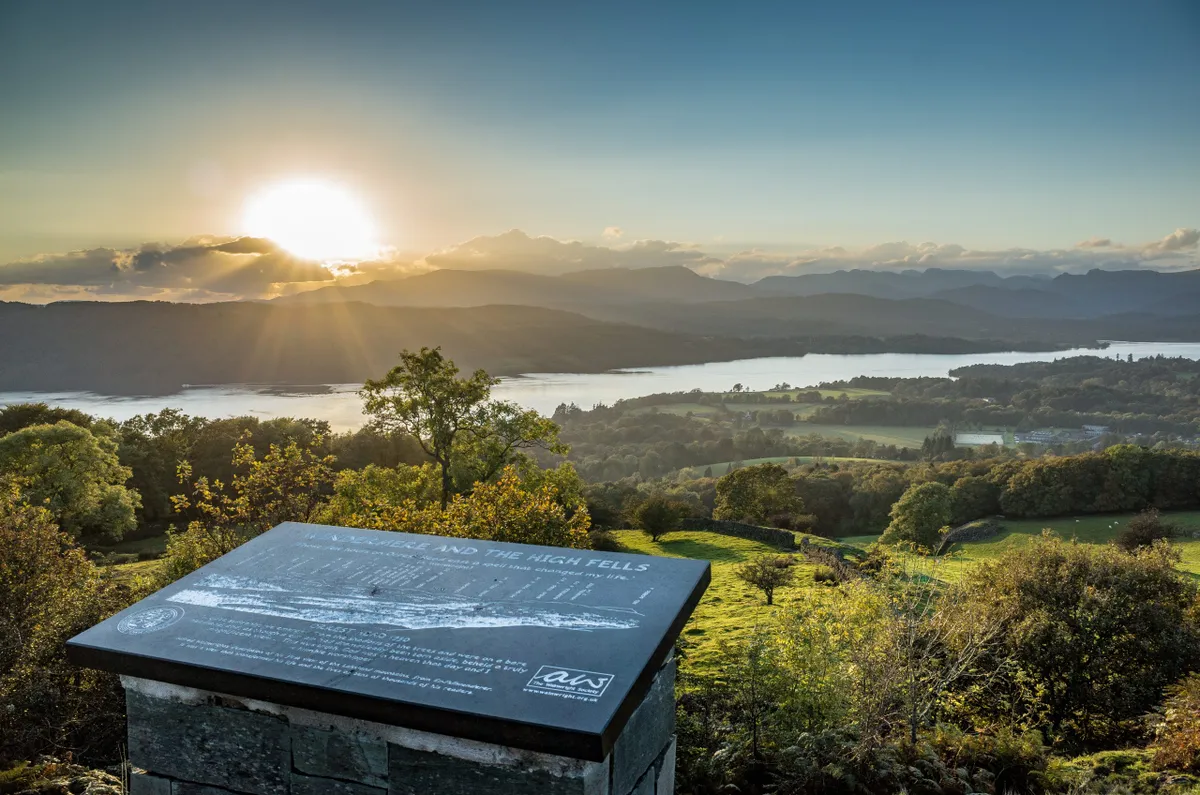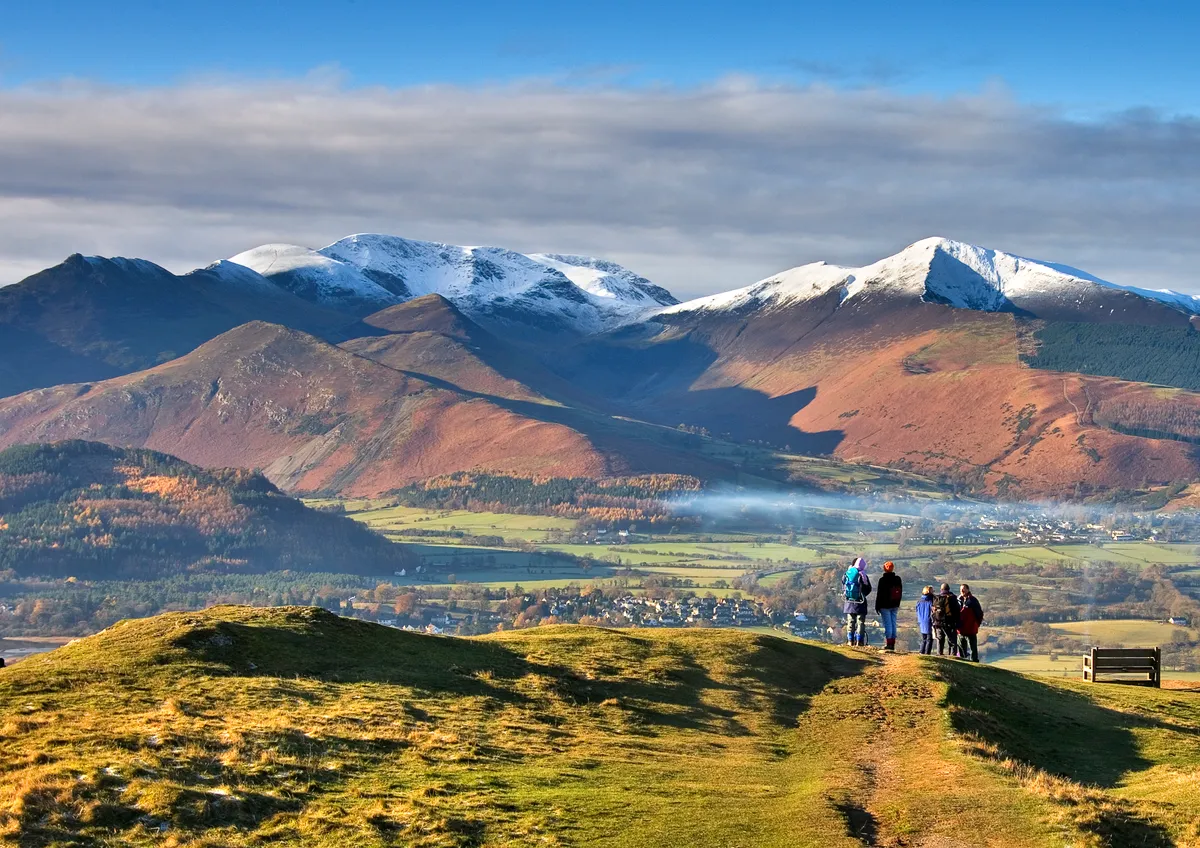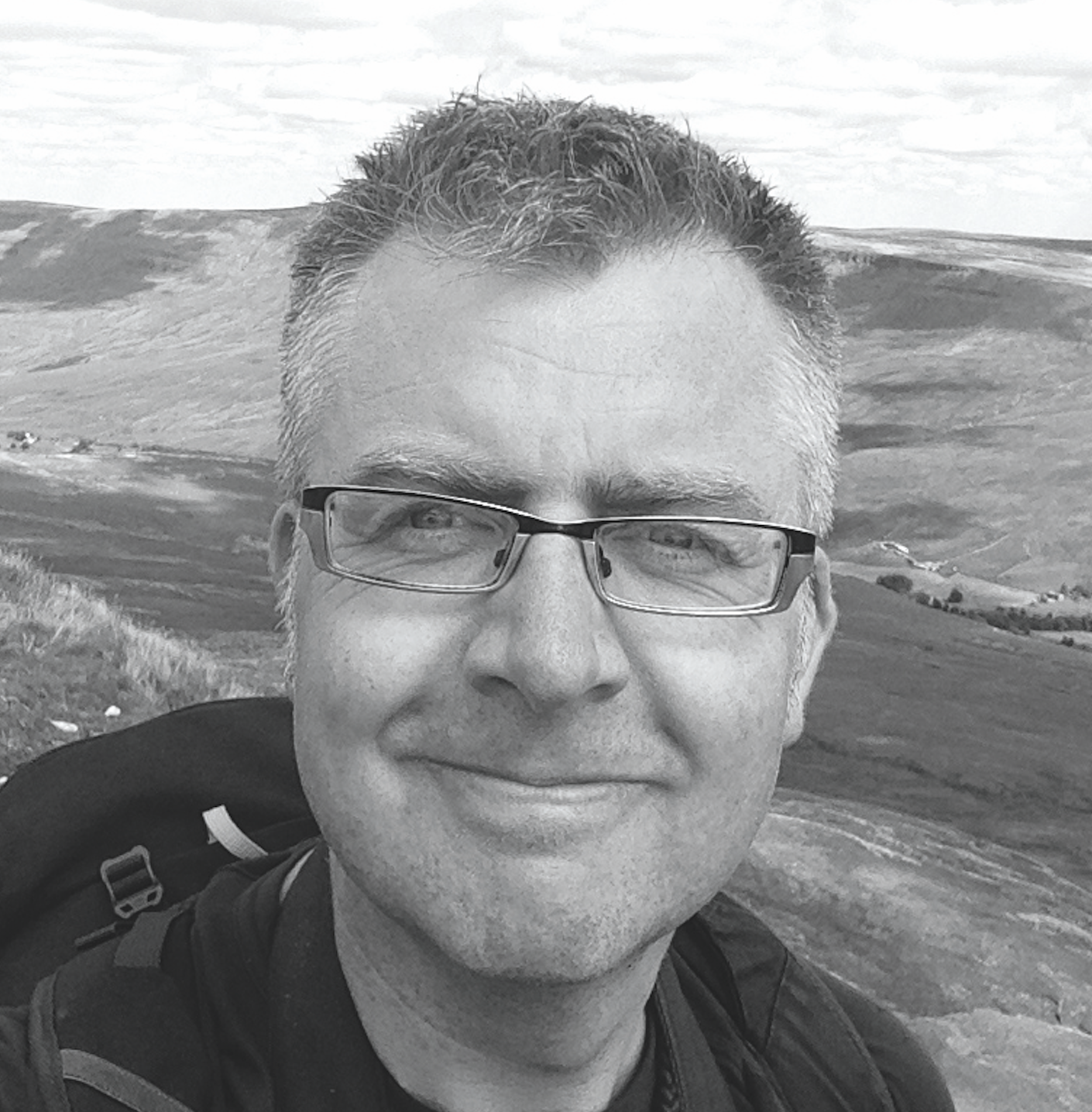In 1930, the then 23-year-old Alfred Wainwright stepped off a train at Windermere Station, having travelled from his home town of Blackburn in Lancashire. This was his first visit to the Lake District. Immediately after leaving the station, young Alfred took the rough path that climbed to the nearest high ground north, bagging his first summit, Orrest Head.
He later reflected on that day in his autobiography Ex-Fellwanderer (1987): “Quite suddenly, we emerged from the shadows of the trees and were on a bare headlandand, as though a curtain had dramatically been torn aside, beheld a truly magnificent view.”
That inspirational moment to the crest of Orrest Head cast a spell that would transform Alfred Wainwright’s life and the lives of all who have followed in his bootprints.

Visiting Orrest Head
For such modest effort, the reward is exceptional, and it is worth repeating that effort throughout the seasons. Choose a clear winter’s day when the snow on the range of the Lakeland fells seems to accentuate their height and ruggedness, and a cornflower-blue sky is reflected in the still waters of Windermere. Or visit on a soft autumn morning when a light mist shrouds Windermere from view, seeping into the colourful woodland that fringes the lake.
An inscribed Lakeland slate tablet in Wainwright’s distinctive and meticulously neat handwriting describes the main peaks on show. It is easy to see how that whetted Wainwright’s appetite to return time after time to Lakeland. Many of the giants are on show: Coniston Old Man, Swirl How and Wetherlam; Crinkle Crags, Scafell Pike and Bowfell; Great Gable, Great End and the Langdale Pikes; High Raise, Ullscarf and Fairfield. When you see all those peaks laid out before you, who would not want to bag them all, then climb them all again using a different route, then describe those routes and draw them all in pen and ink?

Orrest Head walk
4.5 miles/7.2km | 3.5 hours | moderate
1. Peak promise
Walking in Wainwright’s footsteps, leave Windermere railway station and cross the A591 to take a surfaced road signposted for Orrest Head. The way could not be clearer and the large signpost promises “unrivalled views”.
Climbing steeply through woodland, this narrow lane soon loses its surface and continues as a rough track. Take the right-hand fork at a bench and as the track turns right, follow a footpath that rises alongside a wall, becoming enclosed as it reaches a kissing gate. A stepped path climbs quickly on to the magnificent viewpoint at Orrest Head. At 239 metres above sea level, this is the highest point on the walk.

2. Panorama point
While the Lakeland mountains grab centre stage, make sure you enjoy the full 360° view, which includes the twinkling waters of Morecambe Bay to the south-west and the Pennine range to the east.
Head north away from the viewpoint on a grassy path that descends towards a stile in the wall corner. The path continues downhill, running parallel with the wall on the left. Continue in the same direction through a group of rock outcrops, arriving at a lane. Turn right here as far as Near Orrest and turn left through a stile, signposted to Far Orrest.
3. Field foray
Follow the right-hand edge of the field to a kissing gate and then cross a small enclosure to a further gate, and on past a small wood. Strike out across the large field to a wall corner and climb the stile into the next field. Stick to the right-hand side of this field, looking out for a ladder stile ahead. Climb the stile into the next field and head half-right to aim for a collection of farm buildings in the far distance.
Scale the next ladder stile as it leads you to those farm buildings you saw earlier. Take the farm track, which leads to a kissing gate and continues on to another kissing gate. Turn left along the edge of a field, passing the farm buildings at Far Orrest.
Through another gate, the track becomes enclosed by walls; bear right until the track ends. Continue alongside the one remaining wall, keeping Allen Knott on your right.
Head towards a gate in the wall corner and then climb steadily on a grassy path, which then drops down to a lane at Fusethwaite Yeat.
4. Farms to hills
Turn left on the lane for a short distance, then take the left fork to head steeply downhill to reach another fork, where you turn left on the access track to Far Orrest Farm.
Over a cattle grid, fork left once again and follow the access track to the farm buildings at Far Orrest Farm. Keeping left of the farm buildings, look out for a stile signposted for ‘Windermere via Crosses’. Cross the farmyard to head out through a gate and along a farm track that strikes out across a couple of fields.
As the track swings left in the second field, leave by a stile in the wall corner and climb up beside the wall, soon levelling out on Howe Hill to reach another stile.
This leads to a track that passes cottages to reach a lane at Crosses Farm.
5. Arboreal end
Turn left on the lane, passing Crosses Cottage. After about 100m, look for a kissing gate on the right that enters woodland. Take the signed path, crossing Wynlass Beck as the path edges towards the left-hand side of the wood to enter a field. Look for a signpost and exit point in the top left-hand corner of the field, go through it and turn right. Keep the wall on your right on a green path that offers superb views.
The path starts to descend to a stile and gate and dives into woodland. Turn right on the track that descends through the trees. At a fork, take the right-hand track between walls to reach a path junction. Turn left here alongside a high wall. This descending track leads you back to the A591 and Windermere Station.
Orrest Head map
Windermere to Orrest Head walking route and map.


